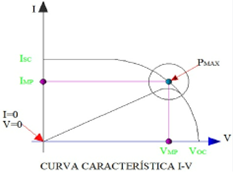Forming and dimensioning of PV strings
Currently, photovoltaic solar energy (PV) is one of the renewable energy sources that is being developed the most, mainly due to the drop in prices in installations of this type. According to IRENA, since 2010 the costs of this technology has been reduced by up to 82%. This together with other factors such as its advances in productivity and its practicality have made the "Solar pv" one of the most used worldwide. As of 2021 , the total installed solar PV capacity globally exceeded 1.1 terawatts (TW), according to the United Nations Environment Programme's (UNEP) "Global Trends in Renewable Energy Investment 2021" report.
One of the most important elements in any system of this type is the photovoltaic panel, a device that converts solar radiation into electrical energy due to the so-called photoelectric effect that, in this case, are usually based on silicon cells.
In order to optimize any photovoltaic solar generation system, we will seek to increase its capacity, and the most basic way to perform this action will be by grouping a large number of panels or modules, thus increasing the generation power of the plant.
The set of photovoltaic modules connected in series is what is known as a PV string, and therefore the formation of a photovoltaic string is crucial for the production of solar energy.
The series of connections of such PV panels, in electrical terms, mean that electric current flows through one PV module and then through the next, and so on through the string assembly in a unitary manner.
On the other hand, the total voltage of the photovoltaic string, is the sum of the voltages of each individual module. Let's take an example: if you take a specific module, under conditions of maximum power (mp), of: 500W (Pmax), 40V (Vmp) and 12.5A (Imp); and you want to form strings of 20 PV modules, the production of this string will be the sum of the powers of all modules in series (20x500W = 10,000W ), which electrically speaking will be the result of the intensity that runs throughout the series (12.5A) multiplied by the sum of all the voltages of the modules (20*40V=800V), thus recalling the famous law of electrical power: P=VxI. The law of electric power states that the amount of electrical energy consumed in a circuit (in units of watts) is equal to the product of the electric current flowing through the circuit (in units of amperes) and the difference in electrical potential (in units of volts) through which current flows.
These PV Strings (which by the very nature of PV technology are established in direct current -CC-) will be connected in parallel in order to continue increasing the capacity of the installation as a whole and prepare for evacuation, which is carried out in, instead, in alternating current (AC) after conversion through an inverter, and in high voltage (HV), after passing through a transformation center and / or lifting substation, but this is another story.
This text aims to address, in an informative way, the main aspects that must be taken into account when sizing these photovoltaic strings.
The principle of sizing a PV strings in a photovoltaic solar plant is based, as we have already mentioned, on being able to optimize and increase the power of the installation, but maintaining an adequate technical characterization based on the main equipment of the plant and the environmental conditions of the place where it is established.
With all this, the first question that should arise would be what is the limit of PV modules that can be connected in series to form a string?
The practical answer, and that would apply to most solar PV plants today, would be: The electrical characteristics of the inverter, specifically its maximum input voltage, which currently corresponds to 1500V.
Therefore, if we take the previous example, it would seem that we can create strings of up to 37 PV panels (37x40V = 1480V), but this is a mistake, since this voltage value (which corresponds to the point of maximum power that the PV module can offer) is not the maximum voltage that the manufacturer assures us. The maximum voltage that a PV module can reach is characterized by its I-V curve (an example image below) and, specifically, corresponds to the open circuit voltage (Voc), which would be the voltage that is measured through the panel when no current passes through it.

And the thing does not end here, it has already been commented that the location of the PV plant will be fundamental when sizing PV strings , and this is because the voltage produced by a PV panel is variable depending on the temperature of it. This temperature is in turn dependent on ambient temperature and incident irradiance.
The following expression relates the temperature of the module cell to these two operating variables:

We remind you that the characteristics set out in the technical sheet of a PV module come under standard measurement conditions (STC: Irrandiancia 1000W/m^2 ; Cell temperature 25ºC), so to perform an adequate sizing, and on the side of safety and good engineering practices, the value of this Voc will have to be extrapolated to the minimum expected temperature, in minimum radiation conditions in which the panel begins to produce, at the location of the PV plant which will probably raise this open circuit voltage (Voc) between 0.5 and 5 V approximately.
![]()
The above calculation is a critical point when sizing the strings, since they will mark the acceptable limit of maximum modules per string that will be reproduced throughout the entire PV plant. This has a direct impact on the power and configuration of the entire PV system.
The fundamental parameters that will affect this extrapolation of the Voc are: the minimum temperature of the PV cell (ºC), which will depend on the minimum ambient temperature taken as a reference (ºC) and the horizontal global radiation (W/m^2); and the particular characteristics of the PV module, among which stand out for this calculation: nominal operating temperature of the cell (ºC) (NOCT), open circuit voltage in STC (V) (Voc), and the temperature coefficient of Voc (% / ºC) that has negative value.
There are a variety of methods for performing this calculation, many based on statistical methods based on large batches of information from meteorological databases.
With the corrections properly calculated, it is possible to predict how the maximum voltage of our string will increase considerably. To continue with the previous example, if we have a Voc (STC) of 45V, when extrapolated to the installation conditions, it could increase up to 47V. This means that, to adapt to the characteristics of the inverter (1500V), we should reduce the number of modules per string.
In this case, at first it seemed as if the answer was 37 modules per string (performing the calculation with the Vmp), with these new considerations and corrections, we should reduce it to 31 modules. That is, we must adjust the number of modules per string to ensure that the voltage of the photovoltaic system is within acceptable and safe limits for proper operation.
After this presentation, it is clear that when designing a photovoltaic production plant, it is of great importance, in addition to selecting the main equipment properly, to perform a dimensioning of the number of modules by strings that entails a balance between the optimization of CAPEX and the safety of the installation
Vector Renewables, through its owners engineering service, verifies that the design of the plant is such that it guarantees the useful life stated in the contract with the owner. It also includes among its services the testing and analysis of plants in operation so that the overall condition can be assessed and realistic lifetime expectations can be provided. .
When you subscribe to the blog, we will send you an e-mail when there are new updates on the site so you wouldn't miss them.

